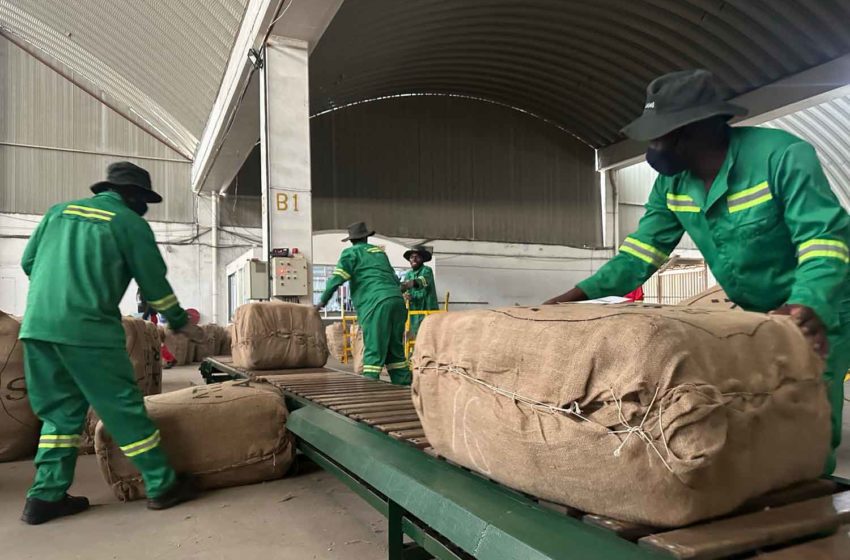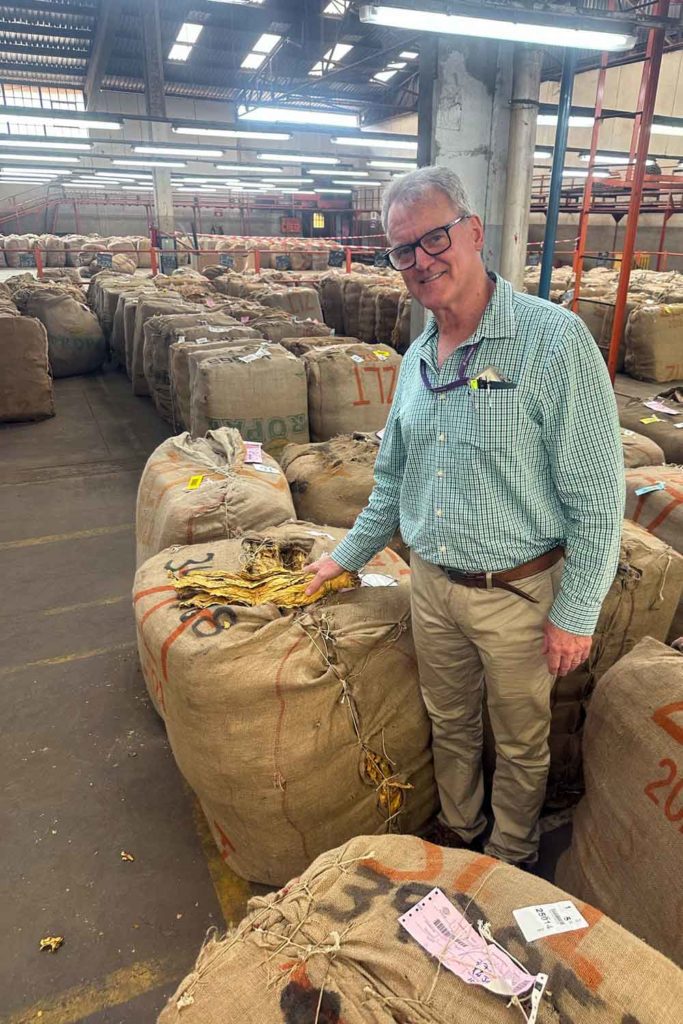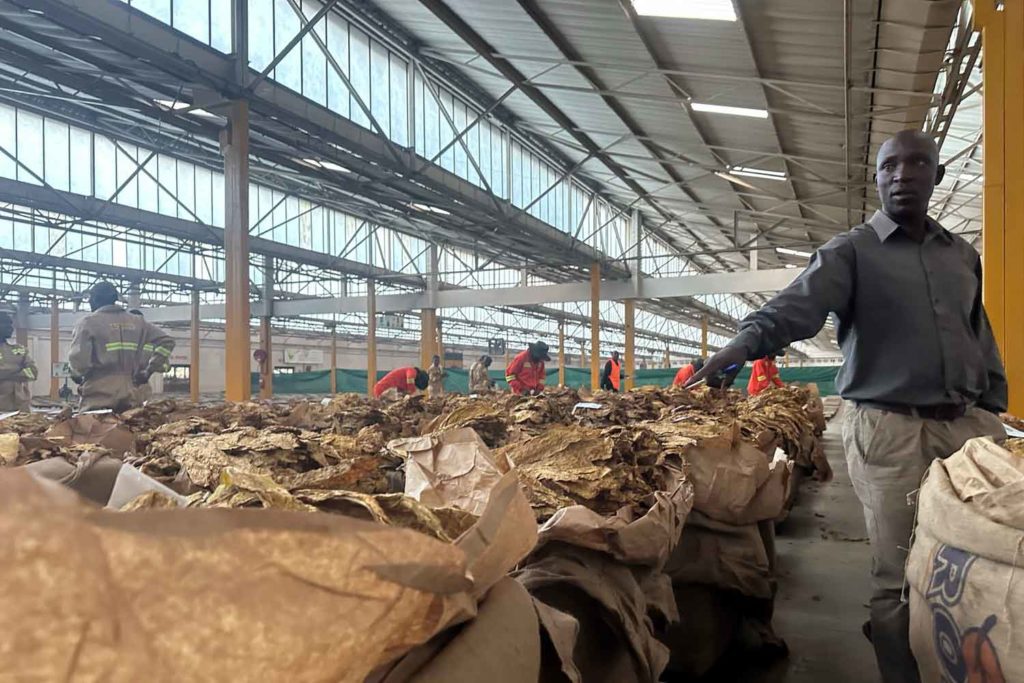The Trade’s Perceptive
- Also in TR Leaf Print Edition Special Report
- May 1, 2023
- 0
- 10 minutes read

The Trade’s Perspective: Leaf Merchants Urge Sustainable Growth
By Taco Tuinstra
Stakeholders in Zimbabwe’s tobacco business have generally been receptive to the Tobacco Value Chain Transformation Plan (TVCTP), which among other things aims to boost leaf production and move up the value chain (see interview with Minister of Agriculture Anxious Masuka). “The plan has some sound fundamentals,” says Mark Mason, managing director of Zimbabwe Leaf Tobacco Co., a subsidiary of Universal. “It sensibly talks about vertical growth—boosting tobacco production by improving yields and cutting losses rather than expanding hectarage or increasing the number of farmers. Those are admirable objectives.”
At the same time, the industry is counseling caution and realistic expectations. In recent years, some entrepreneurs have moved beyond Zimbabwe’s mainstay of flue-cured Virginia (FCV) production. Several companies, including Mosi Oa Tunya Cigars (see “The Smoke that Thunders,” Tobacco Reporter, June 2021), are now manufacturing cigars with locally grown tobacco. Cavendish Lloyd is experimenting with low-nicotine FCV for shisha products (see “Great Expectations,” Tobacco Reporter, May 2022). There are also several companies producing cigarettes for the local market. In October 2022, Cut Rag Processors announced it would build an $80 million cigarette factory in Harare. Iranian Tobacco Co. has expressed interest as well, though the discussions are only at an exploratory stage.

The plan sensibly talks about vertical growth—boosting tobacco production by improving yields and cutting losses rather than expanding hectarage or increasing the number of farmers.
But while BAT and some of its smaller competitors have been happy to manufacture limited amounts of cigarettes in Zimbabwe, it’s doubtful that big players such as Philip Morris International and Japan Tobacco International will build factories in Zimbabwe. Serving global markets and headquartered in Western capitals, the multinationals are guided by purely commercial considerations and generally seek to establish their manufacturing operations in countries with smooth roads, reliable power and business-friendly legislation—areas in which Zimbabwe faces strong competition. For these and other reasons, significant local cigarette production for exports by the majors may remain a bit “pie in the sky,” according to one tobacco veteran.
The merchants, in turn, are content with their current position in the value chain, which ends after the transformation of green leaf into unmanufactured tobacco. Currently, there are three tobacco processing factories in Harare—ZLT, Mashonaland Tobacco Co. (MTC) and Tobacco Processors Zimbabwe, which is managed by Northern Tobacco. “We have no investments beyond processing,” says Rob Holmes, executive officer of the Tobacco Leaf Exporters Association of Zimbabwe (TLEAZ), which represents nine leaf dealers with lamina exports of at least 1 million kg each and accounts for 85 percent of the contracted crop. According to Holmes, moving into cigarette manufacturing would put the merchants in direct competition with their customers—a situation they are obviously keen to avoid. “So, monetary-wise, the value addition described in the plan would take place very much after our stage of the chain,” he says.

(Photos: Taco Tuinstra)
Contracting with tens of thousands of farmers, the merchants are better positioned to help grow the crop. But here, too, they are urging caution. “In the current world market, we would struggle to sell 300 million kg,” says Holmes. “There has been a bit of an increase in the demand for our leaf from China [which purchases 40 percent of Zimbabwean volumes] but not to the extent that you can soak that up.” According to Holmes, the styles that normally go into China are unique to that market and relatively expensive. “Where do you find customers for the excess volumes of those styles?” he asks.
The demand for Zimbabwe’s prized flavor grade tobacco, too, is limited. “International customers require only so much of that style,” says Holmes. “Otherwise, you’d be getting into more filler grade tobaccos, and then you are competing purely on price whilst you’ve got cost-of-production issues.” Supply chain disruptions in the wake of Covid and the war in Ukraine have driven up the cost of inputs such as fertilizer and fuel considerably during the most recent growing season. In addition to such global factors, the Zimbabwean industry has had to cope with local cost pressures this season, such as erratic supplies of electricity and exchange rate rules that force businesses to buy Zimbabwean dollars at official rates while paying significantly higher parallel-market rates for their supplies.

Leaf merchants also want to make sure the tobacco transformation targeted volume increases are achieved sustainably. “We support the government’s goals, but we need to make sure that they are aligned with customer expectations,” says Alex Tait, managing director of MTC, a subsidiary of Alliance One International. Leading cigarette manufacturers these days expect their tobacco to be produced in line with strict environmental, social and governance (ESG) criteria, which means keeping close track of agricultural practices, labor conditions and environmental impacts, among other issues.
The shift from commercial tobacco production to smallholder cultivation has put tremendous pressure on Zimbabwe’s forests. Before the land reforms at the start of the century, the bulk of Zimbabwe’s crop was produced by about 1,500 commercial farmers, who at their peak in the late 1990s brought some 239 million kg to market. Today, similar volumes are cultivated by nearly 160,000 growers, the vast majority (85 percent) of them smallholder farmers. But whereas the commercial farmers use primarily coal to cure their tobacco, the smallholders rely mostly on wood, creating a voracious demand for timber.
In a presentation to industry stakeholders, including the ministry of agriculture, which drew up the TVCTP, the tobacco industry stressed the importance of meeting ESG objectives, noting that there is no point in growing additional volumes if you cannot sell them. Failing to fulfill ESG requirements, the industry cautioned, will prompt customers to source their leaf elsewhere, leaving the Zimbabwean tobacco grower impoverished.

To ensure sustainable growth, tobacco merchants have been developing renewable sources of curing fuel by establishing woodlots and providing farmers with seedlings. Financed by a voluntary leaf dealer contribution, the industry’s Sustainable Afforestation Association has been planting trees since 2013 and is preparing for its first harvest next season. Despite its considerable efforts, the organization still does not have enough renewable wood to cure the current crop, let alone the additional volumes described in the transformation plan.
One of the constraints, according to industry representatives, is access to land close to the tobacco growing areas, which has been mostly in state hands since the land reform program. The prime lands for timber production are in the east of the country, which means added cost for transportation. The government meanwhile collects levies from growers to invest in reforestation, although critics say it is unclear how the money is being invested.
In addition to increasing its supply of sustainable wood, the industry is working to reduce its consumption by helping farmers adopt more efficient curing systems. Innovative designs, such as the rocket barn, allow growers to reduce their wood consumption by up to 50 percent, although costs are a hurdle. At $2,000 per unit, the rocket barn is out of reach for the typical smallholder tobacco grower. The industry is also researching alternative energy sources, such as gas, biomass and briquettes, to curtail deforestation.

Meanwhile, the trade is contributing to vertical growth by helping small-scale growers increase their yields. Benefiting from tailored inputs and agronomic extension services, contracted growers have in recent years increased their productivity to an average of 1,700 kg per hectare, a figure the industry hopes to drive up to 2,200 kg per hectare in the future. The national average, which includes independent growers selling at auction, is estimated at only 800 kg per hectare, however, suggesting considerable opportunity for growth.
“In well-managed contract schemes, with the right service levels, the right inputs and the right advice, you can get very good yields,” says Mason. “That needs to roll out throughout the industry. There is definitely opportunity for the newer contractors or the smaller contractors to push through better programs.”
Zimbabwe’s regulator, the Tobacco Industry and Marketing Board, is in the process of implementing a minimum input standards package recommended by the TLEAZ—not only to increase the crop size and benefit the national economy but also to improve the profitability and livelihoods of individual growers. As all stakeholders interviewed for this article acknowledged, the latter will be crucial for the success of the tobacco transformation plan. After all, the opportunity for Zimbabwe to extract more value from its tobacco industry begins and ends with the ability of the farmer to make a living income.

